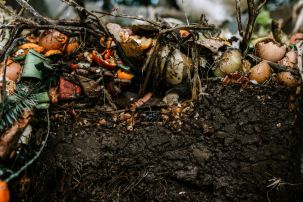Lesson summary
This activity has been designed to support early learning centres joining in Enviroweek. By participating in this activity, children are given the opportunity to learn more about bugs and slugs they can find outdoors. Children make pictures about what they think bugs and slugs look like, and then compare the images to the actual appearance of a creature they observe first-hand.
This activity is designed to help connect children to the wonders of the natural world through sensory and play-based learning.
Learning intentions:
Students will...
- explore bugs and slugs living outdoors. They will learn how to observe them and how to interact with them.
Lesson guides and printables
Lesson details
Curriculum mapping
Learning Outcome 2:
- Children are connected with and contribute to their world
- 2.3 Children become aware of fairness
Learning Outcome 4:
- Children are confident and involved learners
- 4.1 Children develop dispositions for learning such as curiosity, cooperation, confidence, creativity, commitment, enthusiasm, persistence, imagination and reflexivity
- 4.2 Children develop a range of skills and processes such as problem-solving, inquiry, experimentation, hypothesising, researching and investigating
- 4.4 Children resource their own learning through connecting with people, place, technologies and natural and processed materials
Resources required
- Rulers, spoons, sticks or similar items for children to use to “poke around” outdoors and stay safe while looking for and at bugs and slugs
- You might also find torches useful
- Use clear jars or petri dishes if you want to bring some bugs and slugs inside for observation.
- Drawing paper or printouts of Activity Sheet 1 and Activity Sheet 2.
- Slugs and bugs identification sheet.
- Build a bug house instruction sheet and materials for making bug house (empty milk cartons or other tubs, scissors)
Additional info
Following this lesson plan is an ideal way for your centre to take part in Enviroweek. You’ll be joining thousands of amazing educators and teachers in making a difference and creating positive environmental change.


Welcome back!
Don't have an account yet?
Log in with:
By signing up to Cool.org you consent and agree to Cool's privacy policy to
store, manage and process your personal information. To read more, please see
our privacy policy here(Opens in new tab).
Create your free Cool.org account.
Many of our resources are free, with an option to upgrade to Cool+ for premium content.
Already have an account?
Sign up with:
By signing up to Cool.org you consent and agree to Cool's privacy policy to
store, manage and process your personal information. To read more, please see
our privacy policy here(Opens in new tab).